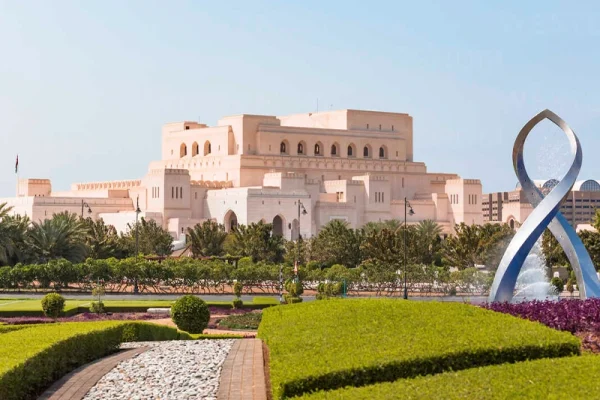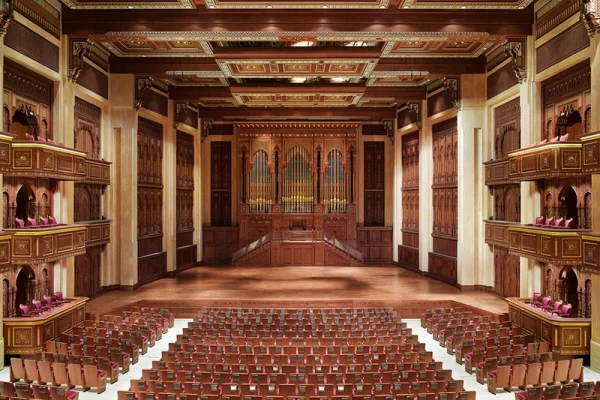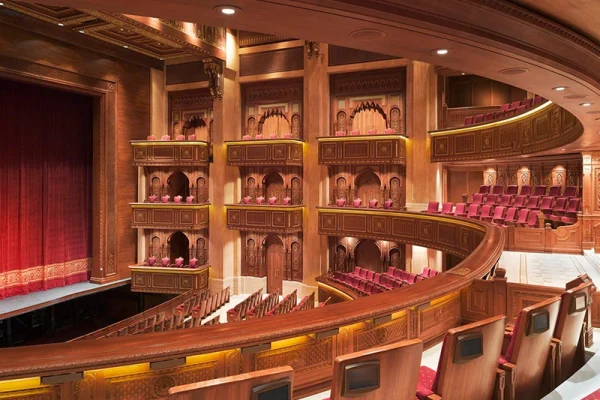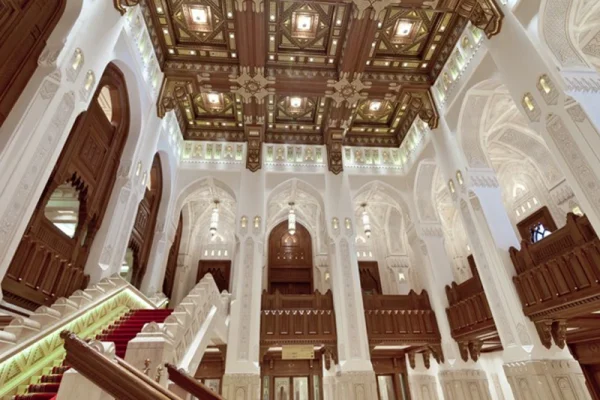The Royal Opera House Muscat: Bridging Cultures through Artistry
- BUZZAAR
-
Sep 21
- Share post
The Royal Opera House Muscat, often referred to as ROHM, stands as a testament to Oman’s commitment to preserving its rich cultural heritage while embracing the beauty of the performing arts.

This architectural masterpiece is not only a hub for music, opera, and dance but also a symbol of Oman’s openness to the world. With its exquisite design, world-class performances, and cultural significance, the Royal Opera House Muscat has become a beacon of artistic excellence in the Middle East and beyond.
Significance and History:
The Royal Opera House Muscat, inaugurated in 2011, represents Oman’s enduring love for music and the performing arts. It was initiated by Sultan Qaboos bin Said al Said, a visionary leader who believed in the power of art and culture to bridge cultural divides and promote understanding. The opera house’s construction was a significant cultural milestone for Oman, a nation that had previously been relatively isolated from the international cultural scene.
One of the most notable aspects of ROHM’s significance is its role as a cultural ambassador. It has successfully promoted Oman’s rich artistic traditions while fostering a spirit of international collaboration. Through its diverse programming, ROHM has managed to bring together artists and audiences from all corners of the globe, making it a platform for cultural exchange and diplomacy.

Architectural Marvel:
The architecture of ROHM is nothing short of awe-inspiring. Designed by renowned architects from WATG, the building is a seamless blend of traditional Omani and contemporary design elements. Its majestic facade features intricate Islamic geometric patterns, while the interior boasts a state-of-the-art auditorium with acoustics that rival the world’s most renowned performance venues.
The opera house’s stunning chandelier, made of Swarovski crystals, is a symbol of luxury and opulence. With a capacity of over 1,000 seats, the auditorium is a testament to modern engineering and design, ensuring that every spectator experiences the performances in the best possible way.

World-Class Performances:
ROHM’s significance is further enhanced by the caliber of performances it hosts. It regularly welcomes some of the world’s most acclaimed artists and ensembles, encompassing a wide range of genres from classical opera and ballet to contemporary dance and Arabic music. The opera house’s diverse programming ensures that it appeals to a broad audience, from seasoned classical music enthusiasts to those new to the world of performing arts.
What truly sets ROHM apart is its commitment to fostering local talent. It provides a platform for emerging Omani artists, helping them hone their skills and gain recognition on the international stage. This dedication to nurturing talent is a testament to the opera house’s role in preserving and promoting Omani culture.

A Cultural Hub:
Beyond its performances, ROHM is a vibrant cultural hub. It houses a comprehensive library, an educational center, and hosts workshops and masterclasses for aspiring artists and students. These initiatives help foster a deep appreciation for the arts and contribute to the cultural enrichment of Oman’s society.
In conclusion, the Royal Opera House Muscat is a symbol of Oman’s cultural renaissance and its commitment to artistic excellence. Its significance lies not only in its architectural grandeur but also in its ability to unite cultures, celebrate diversity, and provide a stage for artistic expression. ROHM is a shining example of how the arts can transcend boundaries and bring people together, making it an awe-inspiring institution that will continue to shine in the world of performing arts for years to come.

